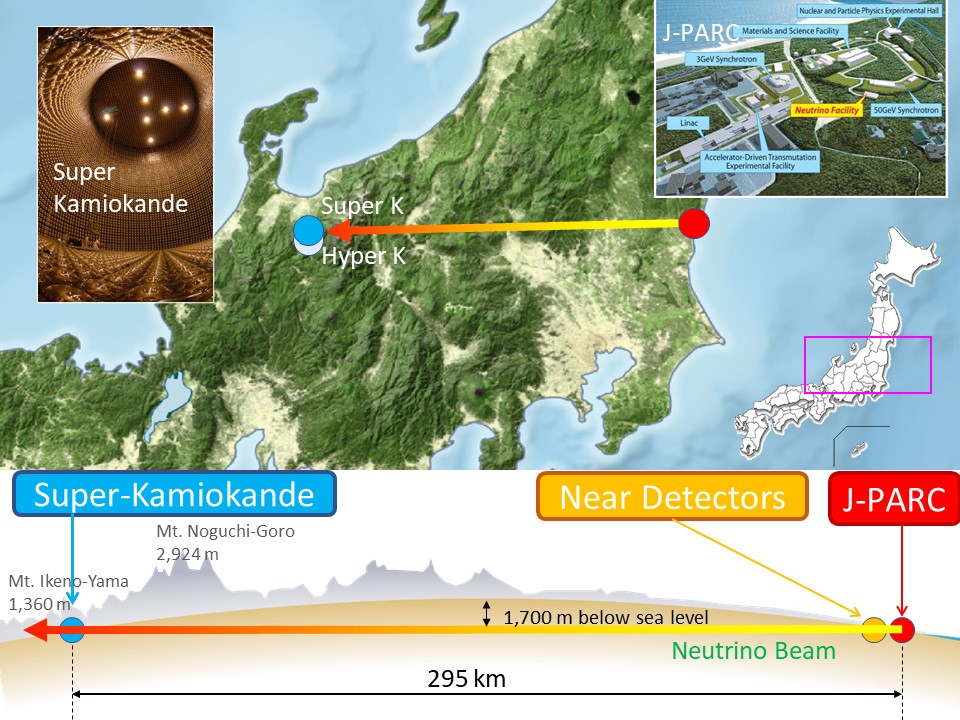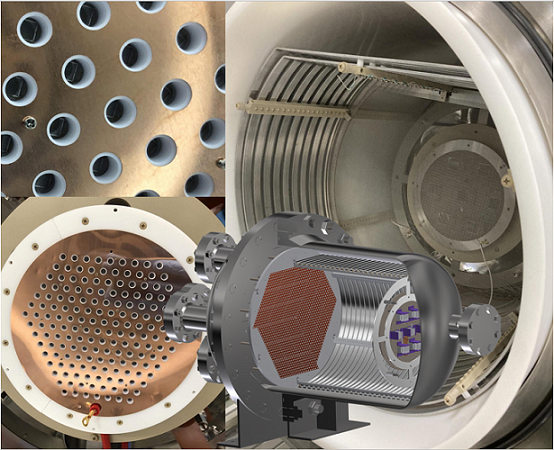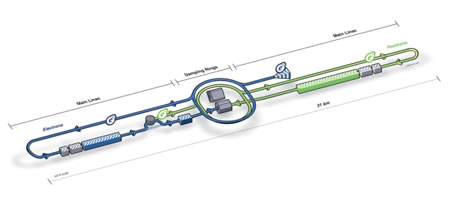Experimental Nuclear and Particle Physics
Experimental Particle Physics (Accelerator)
http://epx.phys.tohoku.ac.jp/eeweb/index_en.html
Staff
| Professor : | Atsuko K. Ichikawa | |||
| Assistant Professor : | Yosuke Ashida | Kiseki Nakamura | Lukas Berns |
Research
The origin of elementary particle properties and the origin of matters in the universe are yet unknown in science. To resolve these mysteries, we are conducting researches using particle accelerators. We study properties of a heavy quark and Higgs particle in detail. We study how neutrinos changes their properties after produced by accelerators and traveling about 300 km. We are also trying to catch special properties of neutrinos by developing a new type of detectors.
Accelerator-based long-baseline neutrino oscillation experiment

Our universe is made of only matter, and no antimatter has been found. This is a mystery that cannot be explained by modern science. By introducing a new piece, the “heavy neutrino”, to the Standard Model, it is possible to solve the puzzle of the extremely low mass of neutrinos and the matter and antimatter asymmetry in the universe. To test this hypothesis, it has been desired to discover “particle-antiparticle symmetry breaking (CP symmetry) in neutrinos” and to determine whether neutrino is so-called Majorana particle whose anti-particle is itself. Our group is conducting international collaboration experiments, the T2K experiment and the Hyper-Kamiokande project, to search for “CP violation in neutrinos”. The T2K experiment measures the neutrinos produced at the J-PARC accelerator with the Super-Kamiokande detector which locates 295 km away from J-PARC. The latest T2K result indicates that CP symmetry is broken at about 95% confidence level. To conclude if CP-symmetry is broken or not, it is necessary to increase amount of data and improve the measurement precision. We are developing equipment’s to increase the neutrino beam intensity, constructing neutrino detectors to improve the measurement precision and developing new analysis methods while continuing data acquisition. Super-Kamiokande detects neutrinos with 50 kton water. The Hyper-Kamiokande project will have a detector with 260 kton water and detect neutrinos with about 8 times higher efficiency. We aim to determine whether neutrinos break CP symmetry, and if so, the magnitude of the break, through the T2K experiment and the Hyper-Kamiokande experiment which will start in 2027.
Search for Neutrinoless double-beta decay

For the “heavy neutrino” scenario mentioned above to work, the neutrinos must be a “Majorana” particle. Many experiments in the world are searching for “neutrinoless double-beta decay”. Double-beta decay, in which two beta decays occur simultaneously, usually emits two antineutrinos. But if the neutrino is Majorana particles, it is possible, though very rare, for these two antineutrinos to annihilate each other, resulting in “neutrinoless double-beta decay”. Our AXEL experiment is also trying to search for “neutrinoless double-beta decay”. The AXEL detector uses 136-Xe, one of the double-beta decay nuclei, in a high-pressure gas state as a detector medium, too. We have developed a new principle that allows us to measure the energy with high resolution and to capture the emission of two beta rays.
International Linear Collider (ILC)

The international linear collider (ICL) is a next generation high-energy accelerator project promoted world-widely. Electrons and positrons are accelerated and collied each other at an energy 125-times of the proton mass by a 20 km-long linear accelerator to recreate the state immediately after the Big Bang. The Kitakami Mountains in Iwate and Miyagi prefectures have been identified as a potential site for ILC. The main purpose of ILC is to produce and study the Higgs boson particle that gives rise to the mass of elementary particles, and to search for physical phenomena beyond the Standard Model, such as the particle that gives rise to dark matter. The LHC accelerator at CERN, which locates outside Geneva, discovered the Higgs boson in late 2012, marking the beginning of a new era in particle physics. LHC will be upgraded and the property of the Higgs boson will be further studied. ILC would have a few-tens more statistical power even compared to the upgraded LHC. In August 2020, a new organization (IDT: ILC International Development Team) was established to lead the realization of the ILC project. Our laboratory is actively working as one of the centers to promote the ILC. We are studying how accurately the properties of the Higgs boson can be measured, and how sensitive it is to discover phenomena beyond the Standard Model, if any. In addition, we are researching materials for accelerator cavities and new manufacturing methods to further improve the performance of accelerators.
Belle II experiment
SuperKEKB, the B-factory at the High Energy Research Institute in Tsukuba, Ibaraki Prefecture, accelerates electrons and positrons in head-on collisions to produce B mesons containing b quarks and anti-B mesons containing anti-b quarks. The Belle II experiment makes various measurements using these mesons. By accumulating 50 times more data than its predecessor, the Belle experiment, which was conducted until 2010, Belle II will search for new phenomena that cannot be explained by the Standard Model. Our laboratory contributed to the start of Belle II and new data is now being accumulated.

